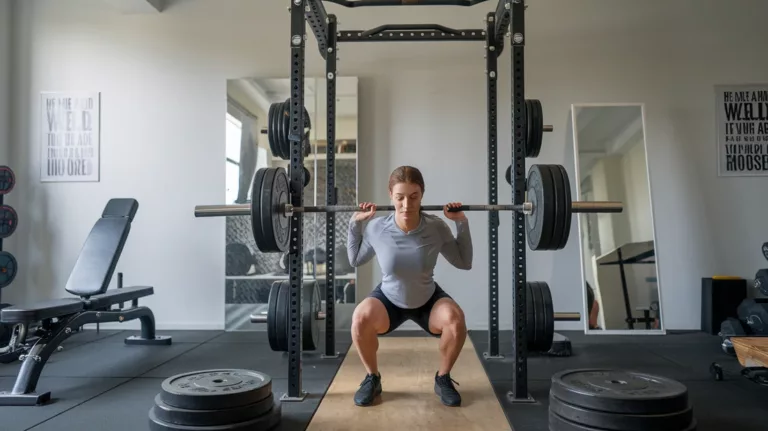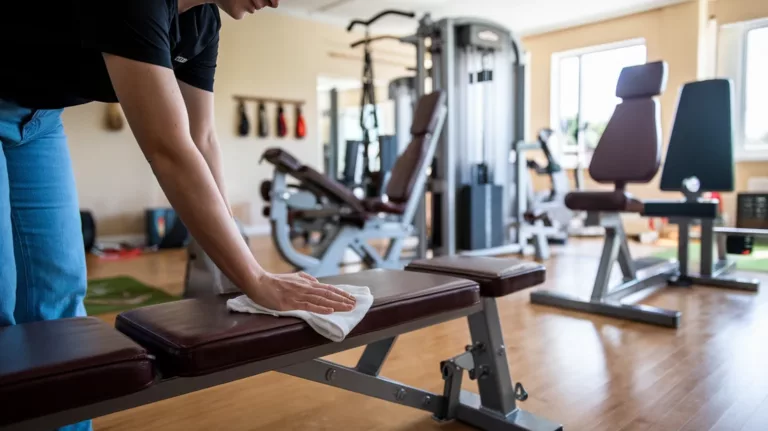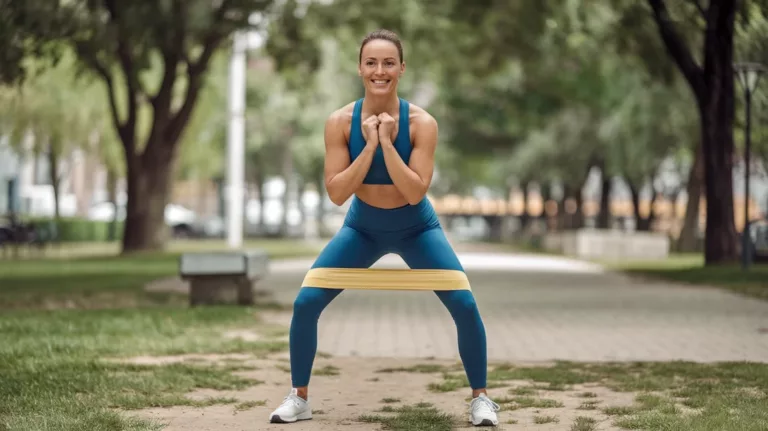Did you know that leg workouts not only tone your muscles but also boost your metabolism? Having strong legs is crucial for overall fitness and mobility.
Whether you’re a fitness enthusiast or just starting your home workout journey, understanding how often to use home exercise equipment for legs is essential.
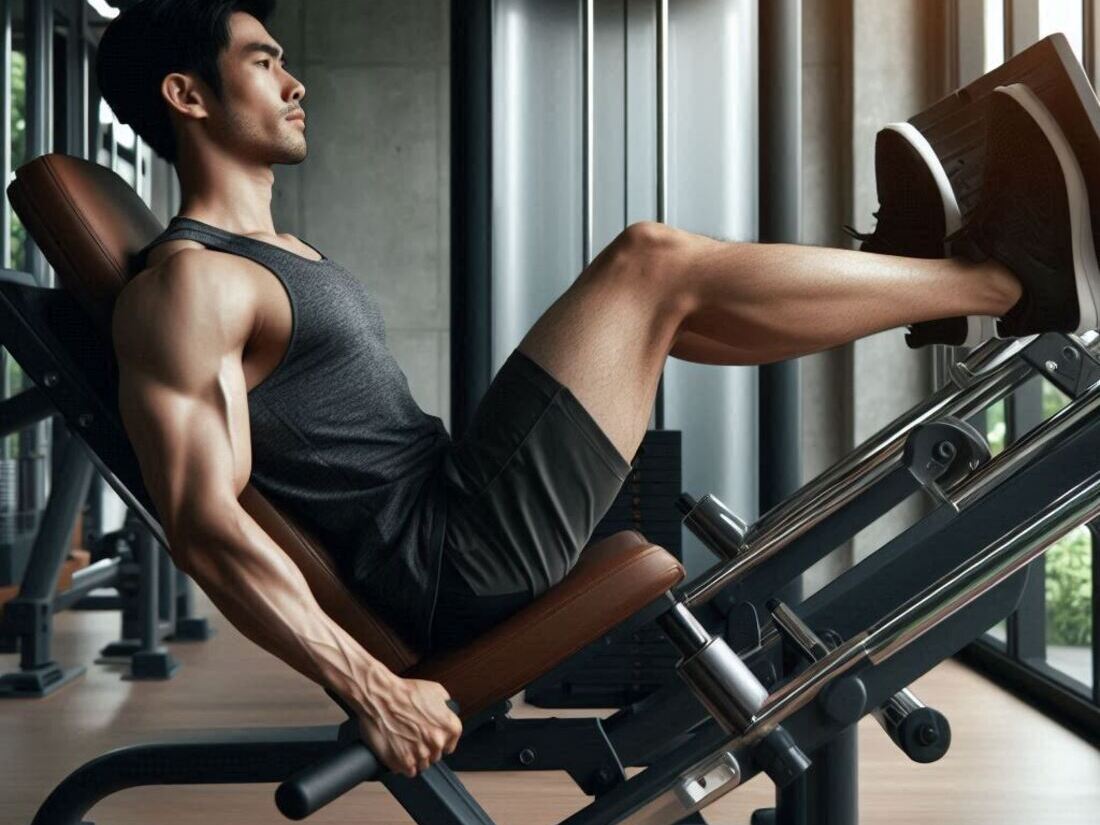
From leg press machines to leg curl machines, there’s a variety of home exercise equipment designed to strengthen and shape your legs.
In this comprehensive guide, we’ll delve into the ideal frequency for leg workouts, discuss the best equipment options, and provide workout routines to help you achieve your fitness goals.
Let’s get started!
Understanding Leg Exercise Frequency
Now that we’ve established the importance of leg workouts, let’s dive into the nitty-gritty of how often you should be working out your legs.
Consistency is key when it comes to seeing results, but overdoing it can lead to injury or burnout.
So, what’s the sweet spot?
Benefits of Consistent Leg Workouts
Regular leg workouts can have a significant impact on your overall fitness and well-being. Some of the benefits include:
- Increased muscle mass: Building strong leg muscles can help boost your metabolism and burn more calories at rest.
- Improved bone density: Resistance training, such as weightlifting or using leg press machines, can help strengthen your bones and reduce the risk of osteoporosis.
- Enhanced athletic performance: Strong legs are essential for many sports and activities, such as running, cycling, or hiking.
- Better balance and coordination: Leg workouts can help improve your balance and coordination, reducing the risk of falls and injuries.
Ideal Frequency for Leg Workouts
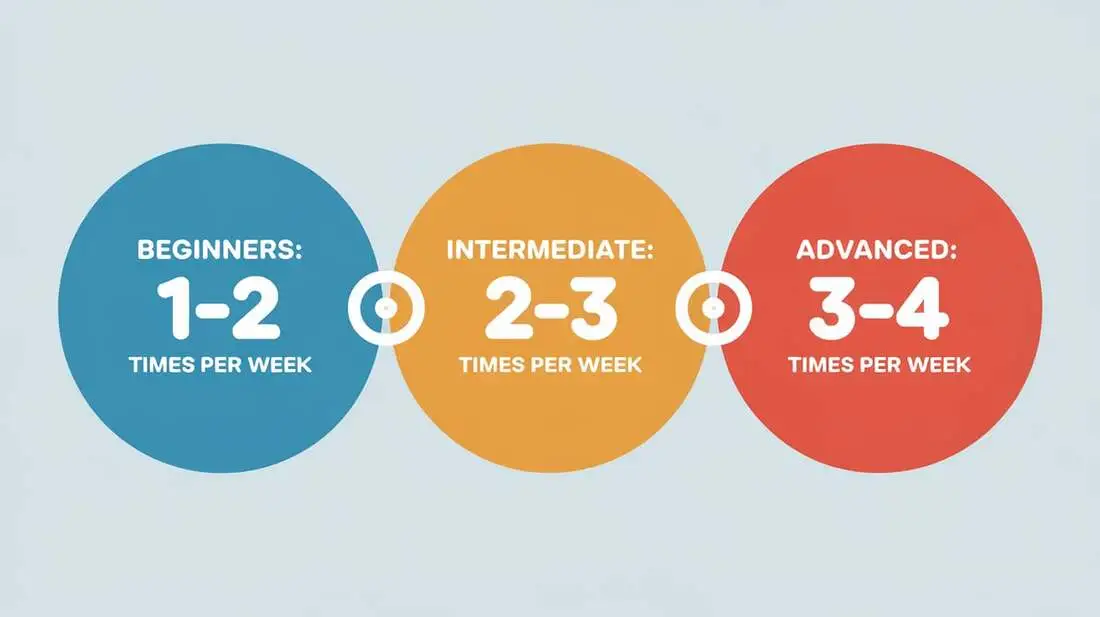
So, how often should you be working out your legs? The American Council on Exercise (ACE) recommends training your legs 2-3 times per week, with at least 48 hours of rest in between.
This allows your muscles time to recover and rebuild, which is essential for growth and strength.
However, the ideal frequency may vary depending on your fitness goals and current fitness level. For example:
- Beginners: 1-2 times per week, with a focus on building a solid foundation of strength and endurance.
- Intermediate: 2-3 times per week, with a focus on increasing intensity and challenging your muscles.
- Advanced: 3-4 times per week, with a focus on fine-tuning your technique and pushing your limits.
Factors Affecting Workout Frequency
While the ideal frequency is a good starting point, there are several factors that can affect how often you should be working out your legs. These include:
- Current fitness level: If you’re new to working out, you may need to start with fewer sessions per week and gradually increase the frequency as your body adapts.
- Fitness goals: If you’re training for a specific event or competition, you may need to increase the frequency and intensity of your workouts.
- Injury or illness: If you’re recovering from an injury or illness, you may need to reduce the frequency and intensity of your workouts to allow your body time to heal.
- Age and mobility: As we age, our bodies naturally lose muscle mass and mobility. You may need to adjust the frequency and intensity of your workouts to accommodate any physical limitations.
By taking these factors into account and finding a workout frequency that works for you, you can achieve your fitness goals and enjoy the many benefits of regular leg workouts.
Best Home Leg Exercise Equipment
Now that you understand the importance of leg workouts and the ideal frequency, let’s dive into the best home leg exercise equipment.
Investing in the right equipment can make a significant difference in your workout routine.
Here are some top options to consider:
Leg Press Machine
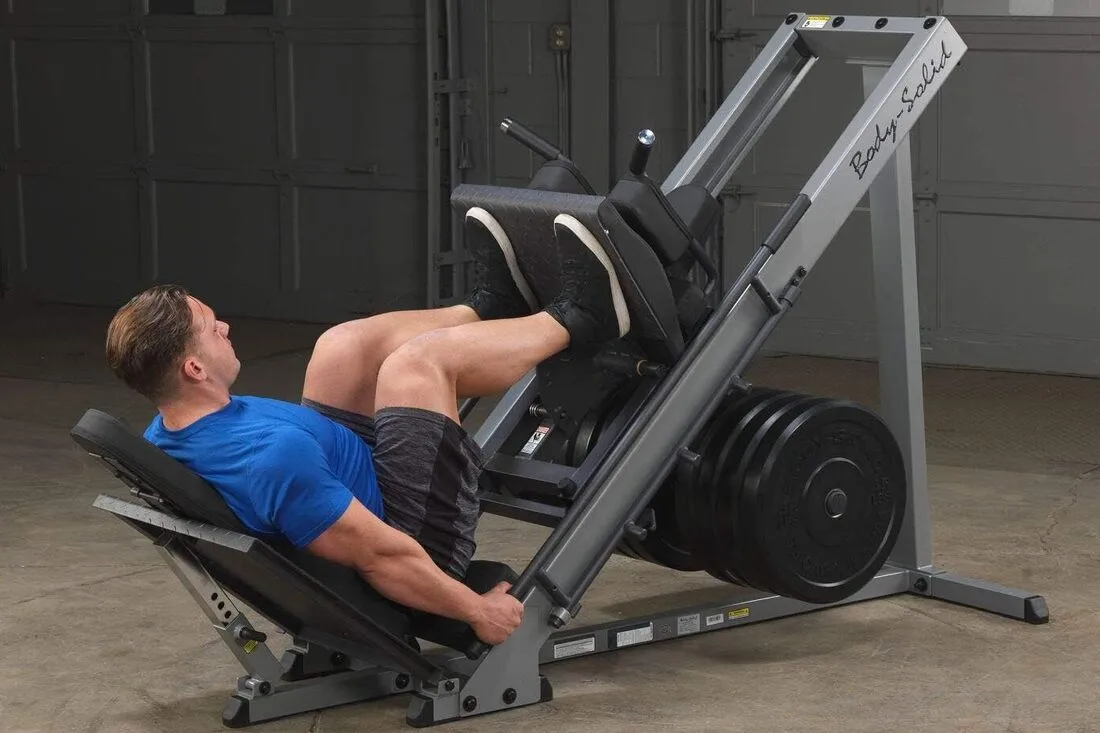
The leg press machine is a staple in many home gyms and for good reason. It targets multiple muscle groups, including your quadriceps, hamstrings, and glutes.
Here’s why it’s a great choice:
- Versatility: The leg press can be used for a variety of exercises, making it a versatile piece of equipment.
- Safety: It provides stability and reduces the risk of injury, making it suitable for beginners.
- Effectiveness: It allows you to lift heavy weights safely, promoting muscle growth and strength.
Leg Curl Machine
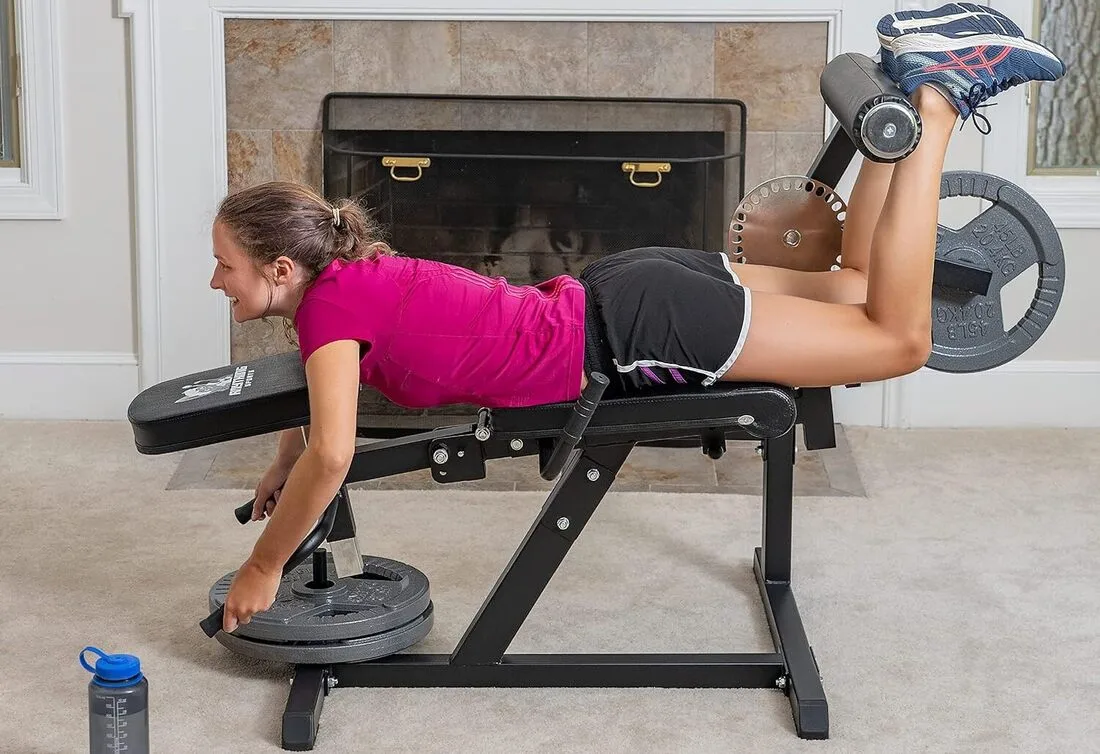
The leg curl machine specifically targets your hamstrings, the muscles at the back of your thighs. This machine is essential for building balanced leg strength.
Here are some benefits:
- Isolation: It isolates the hamstrings, allowing for focused training.
- Ease of Use: It’s straightforward to use, making it accessible for users of all fitness levels.
- Muscle Definition: Regular use can lead to better muscle definition in the hamstrings.
Leg Extension Machine
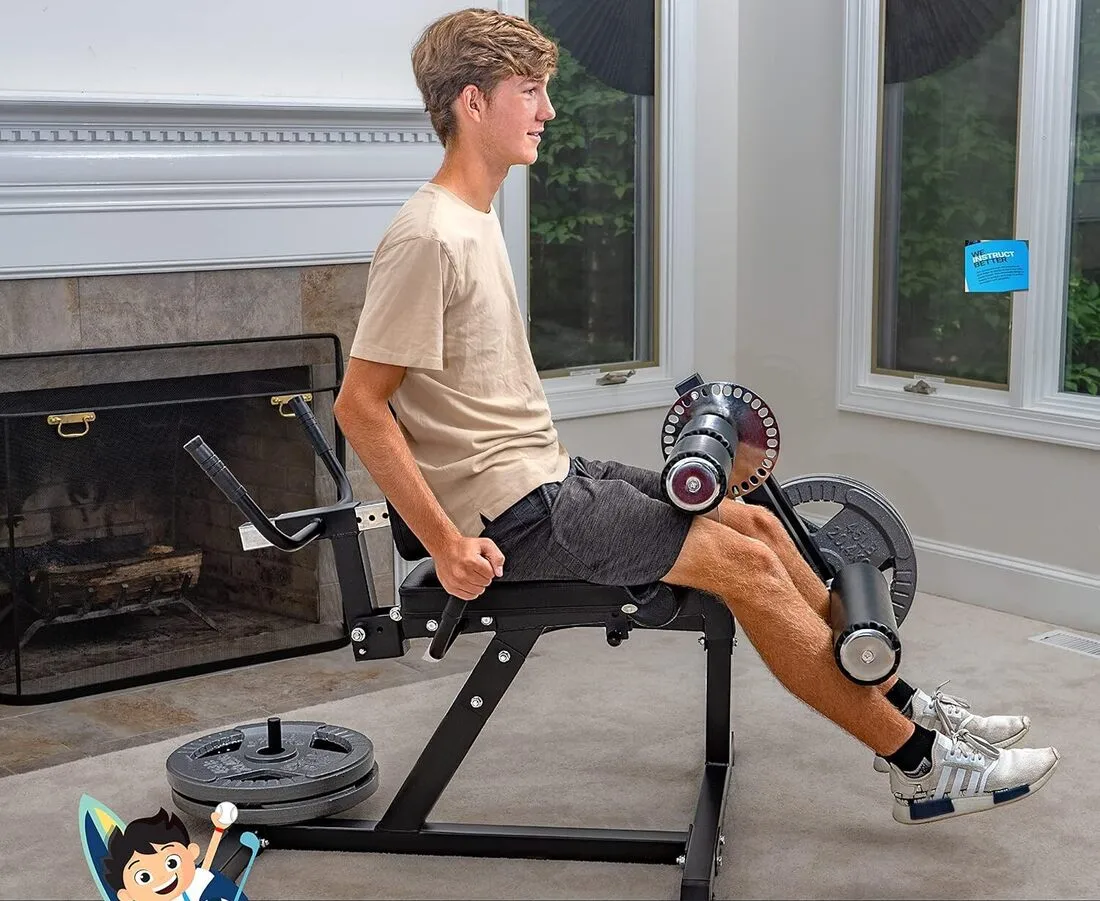
The leg extension machine targets your quadriceps, the muscles at the front of your thighs. This machine is excellent for building strength and definition in your legs.
Here’s what it offers:
- Focused Training: It isolates the quadriceps, making it ideal for targeted muscle development.
- Adjustability: Most machines allow for adjustments to accommodate different sizes and fitness levels.
- Comfort: It usually comes with padded seats and handles for a comfortable workout experience.
Hip Abductor Machine
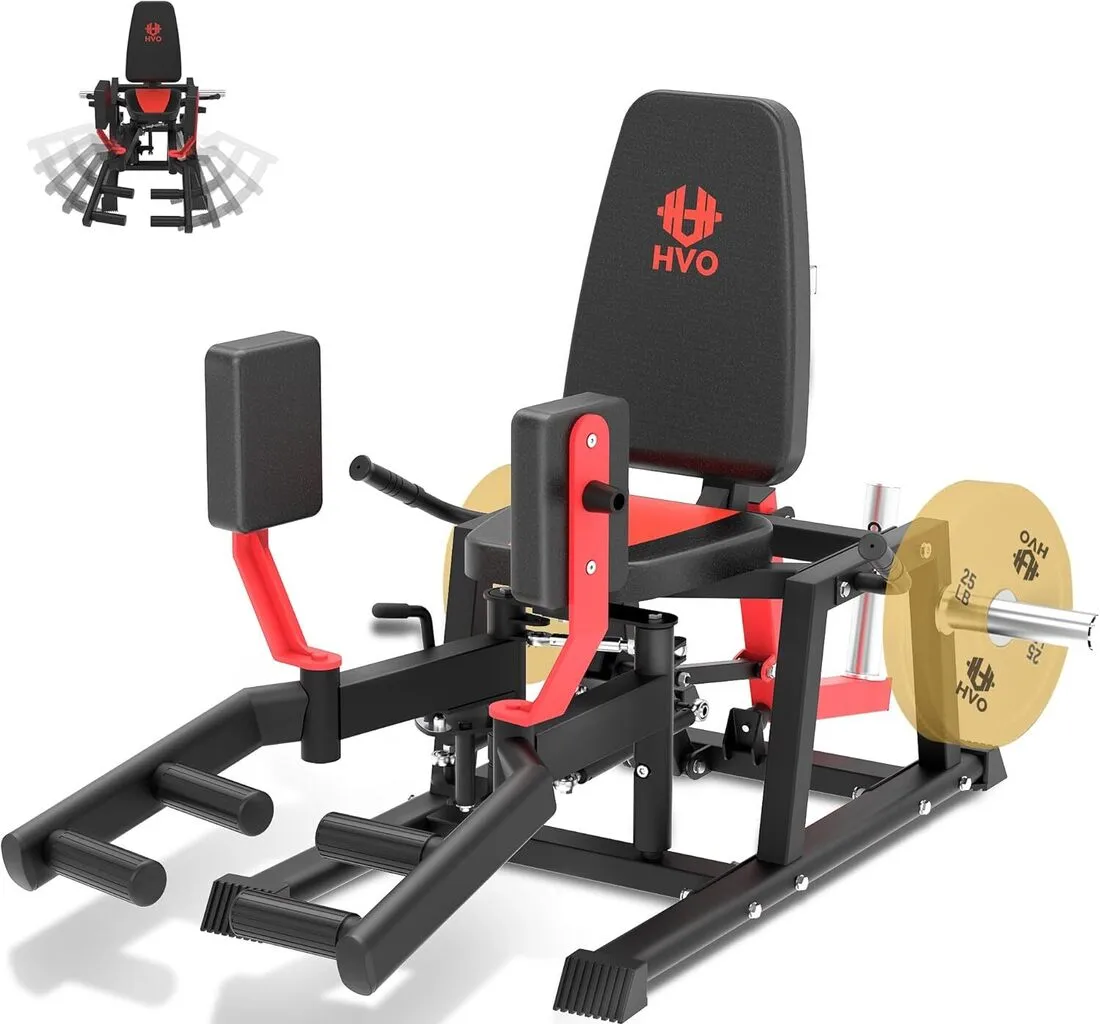
The hip abductor machine targets the outer thighs and glutes.
This machine is great for improving hip strength and stability, which is crucial for many sports and daily activities. Here are some advantages:
- Strengthening: It strengthens the muscles that support your hips and knees.
- Injury Prevention: Stronger hips can help prevent common injuries like knee pain.
- Versatility: It can be used for both strength and endurance training.
Calf Raise Machine
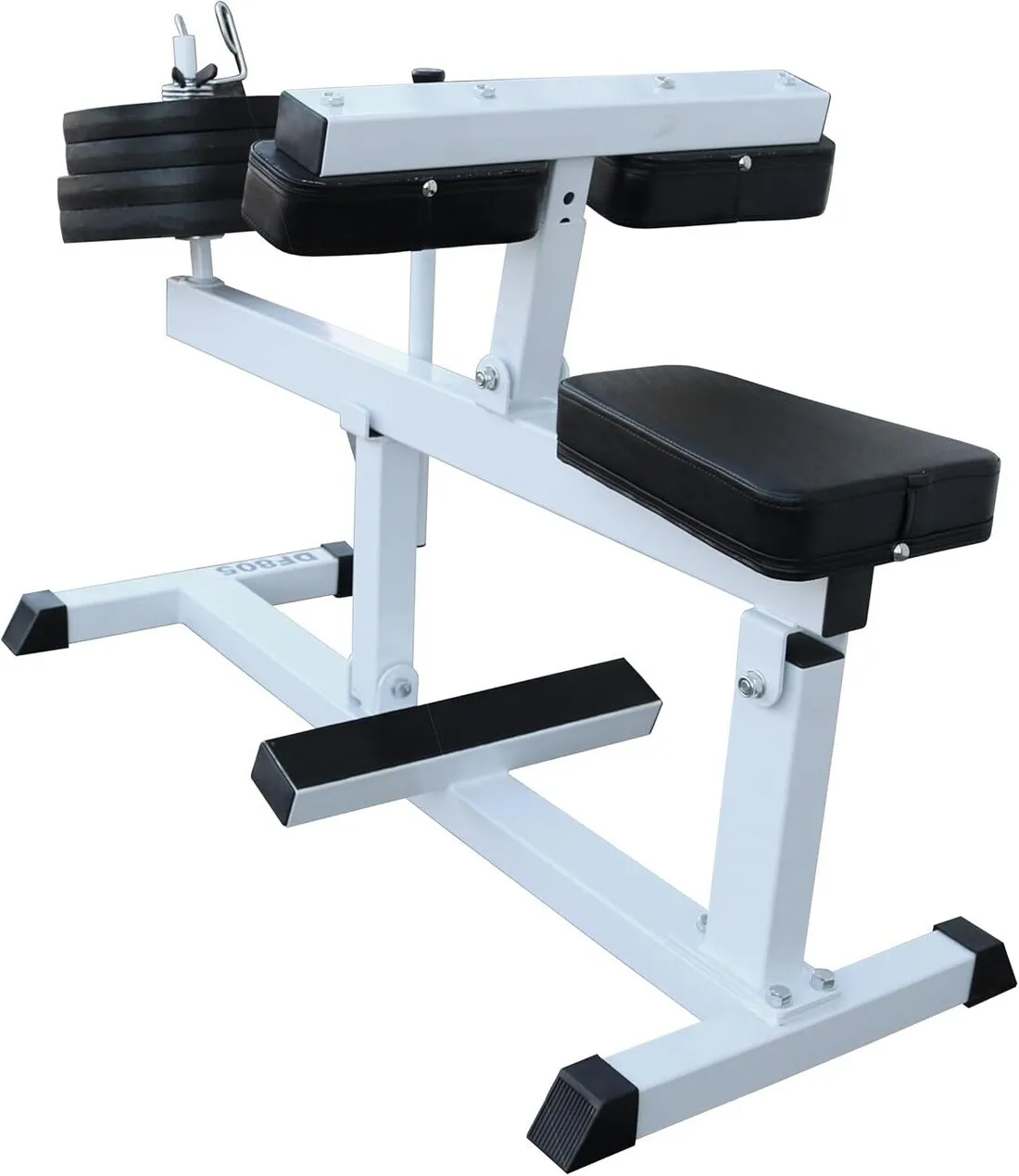
The calf raise machine targets your calf muscles, which are often overlooked but essential for overall leg strength and mobility. Here’s why you should consider it:
- Targeted Training: It specifically targets the calf muscles, allowing for focused development.
- Improved Athletic Performance: Strong calves can enhance your performance in activities like running and jumping.
- Balance and Stability: Strong calves contribute to better balance and stability, reducing the risk of falls and injuries.
Each of these machines offers unique benefits, and incorporating them into your home gym can help you achieve a well-rounded leg workout.
In the next section, we’ll provide you with some effective leg workout routines that you can do at home. Stay tuned!
Leg Workout Routines for Home
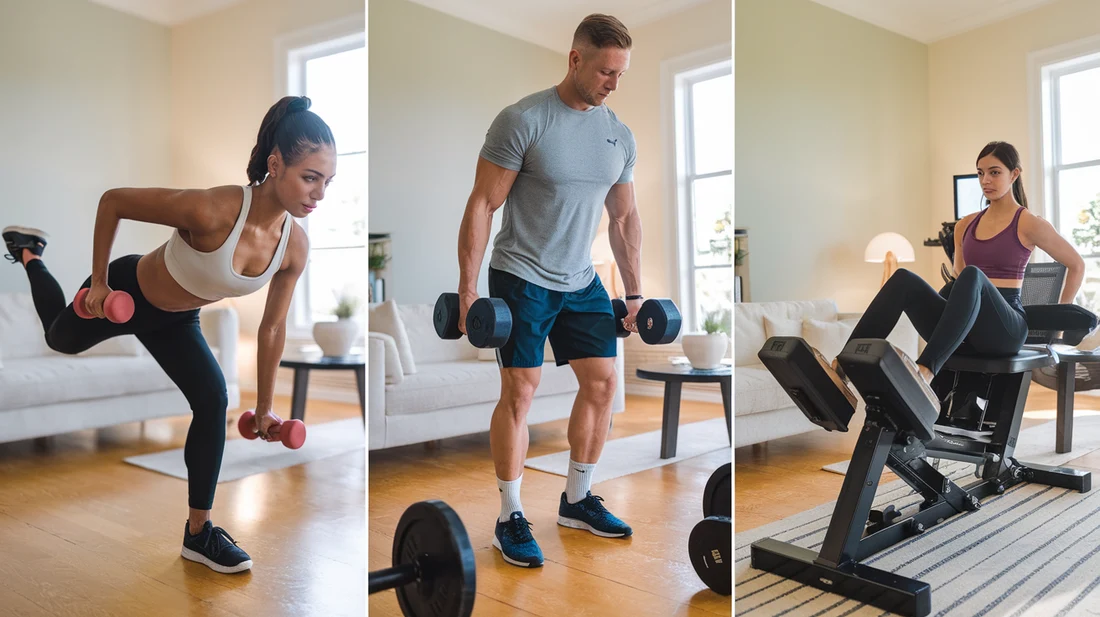
Alright, fitness enthusiasts! Now that we’ve covered the best equipment for your home leg workouts, let’s get into the nitty-gritty of some effective routines.
Whether you’re just starting out or you’re a seasoned gym-goer, we’ve got something for everyone.
Remember, consistency is key, so choose a routine that fits your current fitness level and stick with it!
Beginner Leg Workout Routine
If you’re new to leg workouts, this routine is perfect for you. It’s designed to help you build a solid foundation of strength and endurance.
Perform this routine 2-3 times a week, with at least one day of rest between sessions.
- Leg Press Machine: 3 sets of 10-12 reps
- Start with a light weight to focus on form.
- Slowly push the platform away, then control it back to the starting position.
- Bodyweight Squats: 3 sets of 12-15 reps
- Stand with feet shoulder-width apart.
- Lower your body as if sitting back into a chair, then push through your heels to stand back up.
- Leg Curl Machine: 3 sets of 10-12 reps
- Start with a light weight.
- Curl your legs towards your buttocks, then slowly lower back down.
- Calf Raises: 3 sets of 15-20 reps
- Stand on the edge of a step, holding onto something for balance if needed.
- Raise your heels as high as possible, then lower them below the step level.
Intermediate Leg Workout Routine
Ready to kick it up a notch?
This routine is for those who have been working out consistently for a few months and are ready for more of a challenge. Aim to perform this routine 2-3 times a week.
- Leg Press Machine: 4 sets of 8-10 reps
- Increase the weight from your beginner routine.
- Focus on slow, controlled movements.
- Leg Extension Machine: 3 sets of 12 reps
- Choose a weight that challenges you for the last 2-3 reps.
- Extend your legs fully, hold for a second, then lower slowly.
- Leg Curl Machine: 3 sets of 12 reps
- Increase the weight from your beginner routine.
- Focus on squeezing your hamstrings at the top of the movement.
- Hip Abductor Machine: 3 sets of 15 reps
- Push your legs out against the resistance, then slowly bring them back in.
- Calf Raise Machine: 4 sets of 15 reps
- Perform the first two sets with toes pointing forward, the last two with toes pointing slightly outward.
Advanced Leg Workout Routine
For those of you who’ve been hitting the leg machines consistently and are looking for a real challenge, this routine is for you.
Perform this routine 3-4 times a week, ensuring proper rest between sessions.
- Leg Press Machine: 5 sets of 6-8 reps
- Use a heavy weight that challenges you.
- On the last set, try to perform 2-3 extra reps with a slightly lighter weight.
- Leg Extension Machine: 4 sets of 10 reps
- Perform the first 3 sets normally.
- On the last set, do a drop set: start with your usual weight, then immediately reduce the weight by 20-30% and do as many reps as possible.
- Leg Curl Machine: 4 sets of 10 reps
- Follow the same pattern as the leg extensions, including the drop set on the last set.
- Hip Abductor Machine: 3 sets of 12 reps
- On the last set, hold the extended position for 2 seconds before bringing your legs back in.
- Calf Raise Machine: 5 sets of 15 reps
- Alternate between sets with toes pointing forward and sets with toes pointing slightly outward.
- On the last rep of each set, hold the raised position for 5 seconds.
- Superset: Bodyweight Lunges and Jump Squats
- Perform 12 lunges on each leg, immediately followed by 10 jump squats.
- Repeat this superset 3 times with minimal rest between sets.
Remember, these routines are just starting points. Feel free to adjust the number of sets, reps, or exercises based on your personal fitness level and goals.
And most importantly, listen to your body. If you feel pain (not just muscle fatigue), stop the exercise and consult with a fitness professional or healthcare provider.
Now, let’s move on to some crucial safety tips to keep in mind while performing these exercises!
Safety Tips for Leg Exercises
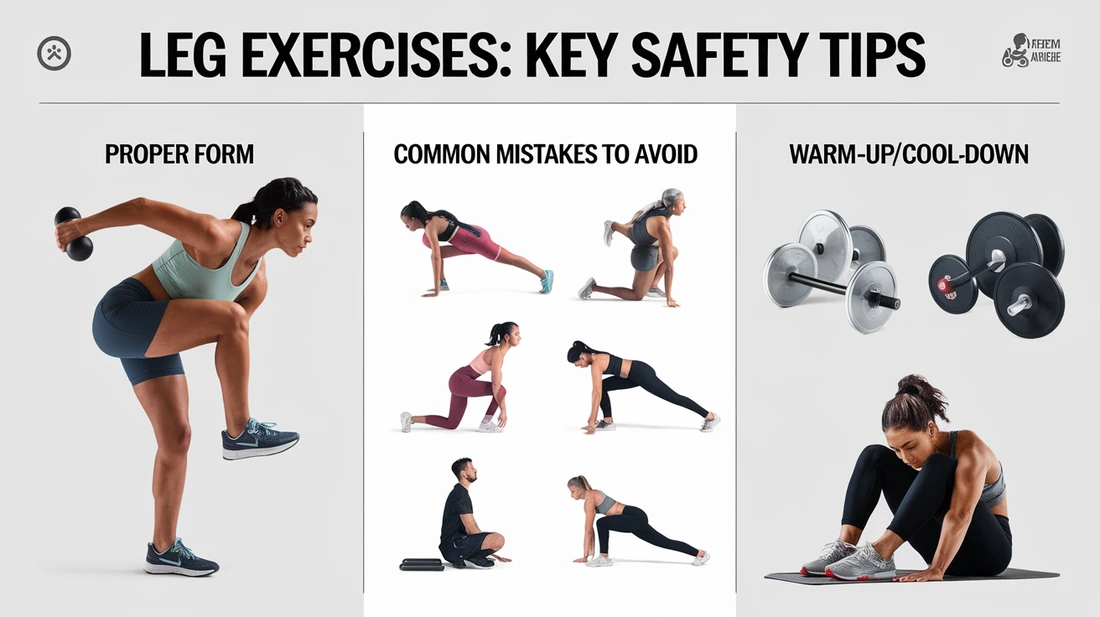
Alright, fitness friends, let’s talk safety! While leg exercises are fantastic for building strength and improving overall fitness, they can also lead to injuries if not performed correctly.
So, before you jump into your new leg workout routine, let’s cover some crucial safety tips to keep you strong and injury-free.
Proper Form and Technique
Maintaining proper form is the golden rule of any exercise routine. Here are some key points to remember:
- Alignment is key: Keep your knees in line with your toes during exercises like squats and leg presses. This helps protect your knee joints from unnecessary stress.
- Mind your back: Maintain a neutral spine during all exercises. This means no excessive arching or rounding of your back.
- Control the movement: Avoid using momentum to lift weights. Slow, controlled movements are more effective and safer.
- Full range of motion: Unless otherwise instructed, try to complete the full range of motion for each exercise. This ensures you’re getting the most out of each rep.
- Breathe: Don’t hold your breath! Exhale as you exert effort (like pushing the weight) and inhale as you return to the starting position.
Common Mistakes to Avoid
Even seasoned gym-goers can fall into bad habits. Here are some common mistakes to watch out for:
- Overloading the weight: It’s not about how much you can lift, it’s about how well you can lift it. Start with a weight you can manage with proper form.
- Locking your knees: Fully extending your legs to the point where your knees lock can put unnecessary stress on your joints. Keep a slight bend in your knees at the top of movements.
- Neglecting your core: Your core plays a crucial role in stabilizing your body during leg exercises. Keep it engaged throughout your workout.
- Ignoring pain: There’s a difference between muscle fatigue and pain. If you feel sharp or persistent pain, stop the exercise immediately.
- Skipping warm-up and cool-down: These are essential parts of your workout routine, not optional extras!
Warm-up and Cool-down Routines
Speaking of warm-ups and cool-downs, let’s break these down:
Warm-up Routine (5-10 minutes):
- Light cardio: Start with 3-5 minutes of light jogging in place or jumping jacks to get your blood flowing.
- Dynamic stretches: Perform leg swings, walking lunges, and gentle squats to prepare your muscles for the workout ahead.
- Activation exercises: Do a few bodyweight squats or leg lifts to activate the muscles you’ll be using in your workout.
Cool-down Routine (5-10 minutes):
- Light cardio: Spend 2-3 minutes walking or doing a light jog to gradually lower your heart rate.
- Static stretches: Hold stretches for your quads, hamstrings, calves, and glutes for 15-30 seconds each.
- Foam rolling: If available, use a foam roller on your leg muscles to help with recovery and reduce muscle soreness.
Remember, safety should always be your top priority.
If you’re unsure about how to perform an exercise or use a machine correctly, don’t hesitate to ask a fitness professional for guidance. It’s better to ask for help than to risk injury!
Now that we’ve covered safety, let’s move on to explore the specific benefits of different leg exercises in our next section.
Get ready to learn how each exercise can contribute to your overall leg strength and fitness!
Benefits of Different Leg Exercises
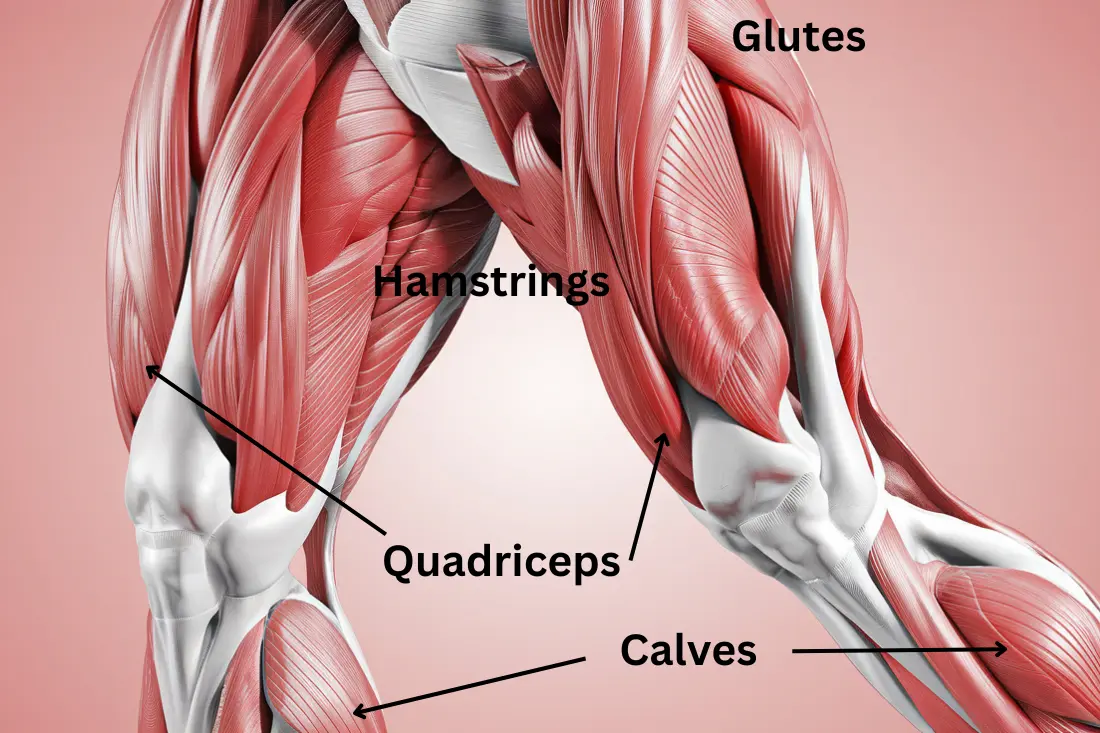
Alright, fitness enthusiasts! Now that we’ve covered the essentials of leg workout routines and safety tips, let’s dive into the specific benefits of different leg exercises.
Each exercise targets different muscle groups, and understanding these benefits can help you tailor your workouts to meet your specific fitness goals. Let’s break it down:
Quadriceps Exercises
The quadriceps, located at the front of your thighs, are one of the largest muscle groups in your body. Here are some key exercises and their benefits:
- Leg Press Machine:
- Benefits: This exercise targets the entire quadriceps muscle group, as well as the hamstrings and glutes. It’s an excellent choice for building overall leg strength and muscle mass.
- How to Do It: Sit in the machine with your feet flat on the platform. Push the platform away by extending your legs, then slowly bring it back to the starting position.
- Leg Extension Machine:
- Benefits: This exercise isolates the quadriceps, making it ideal for targeted muscle development. It’s great for improving muscle definition and strength.
- How to Do It: Sit in the machine and hook your ankles under the pads. Extend your legs fully, then slowly lower them back down.
- Bodyweight Squats:
- Benefits: Squats are a compound exercise that engage multiple muscle groups, including the quadriceps, hamstrings, and glutes. They’re excellent for overall leg development and improving functional strength.
- How to Do It: Stand with your feet shoulder-width apart. Lower your body as if sitting back into a chair, then push through your heels to stand back up.
Hamstrings Exercises
The hamstrings, located at the back of your thighs, are crucial for knee stability and athletic performance. Here are some key exercises and their benefits:
- Leg Curl Machine:
- Benefits: This exercise isolates the hamstrings, making it ideal for targeted muscle development. It’s great for improving muscle definition and strength.
- How to Do It: Lie face down on the machine and hook your ankles under the pads. Curl your legs towards your buttocks, then slowly lower them back down.
- Stiff-Legged Deadlifts:
- Benefits: This exercise targets the hamstrings and lower back, making it ideal for improving functional strength and muscle definition.
- How to Do It: Stand with your feet hip-width apart, holding a barbell or dumbbell in front of you. Hinge at your hips and lower the weight towards the ground, keeping your legs straight. Then, lift the weight back up by extending your hips.
Glutes Exercises
The glutes, located in your buttocks, are essential for hip stability and overall lower body strength. Here are some key exercises and their benefits:
- Hip Abductor Machine:
- Benefits: This exercise targets the outer thighs and glutes, improving hip strength and stability. It’s great for preventing injuries and improving athletic performance.
- How to Do It: Sit in the machine and push your legs out against the resistance, then slowly bring them back in.
- Glute Bridges:
- Benefits: This exercise isolates the glutes and hamstrings, making it ideal for improving muscle strength and definition. It’s also great for improving hip mobility.
- How to Do It: Lie on your back with your knees bent and feet flat on the ground. Lift your hips towards the ceiling, squeezing your glutes at the top. Then, lower your hips back down.
Calves Exercises
The calves, located at the back of your lower leg, are crucial for ankle stability and overall leg strength. Here are some key exercises and their benefits:
- Calf Raise Machine:
- Benefits: This exercise targets the gastrocnemius and soleus muscles, improving calf strength and definition. It’s great for improving athletic performance and preventing injuries.
- How to Do It: Stand on the platform of the machine with your toes on the edge. Raise your heels as high as possible, then lower them below the platform level.
- Standing Calf Raises:
- Benefits: This exercise targets the gastrocnemius muscle, improving calf strength and definition. It’s a simple yet effective exercise that can be done anywhere.
- How to Do It: Stand on the edge of a step, holding onto something for balance if needed. Raise your heels as high as possible, then lower them below the step level.
By incorporating a variety of these exercises into your leg workout routine, you can target all major muscle groups and achieve a well-rounded, strong, and defined lower body.
Don’t forget to listen to your body and adjust the intensity and frequency of your workouts as needed.
Now that we’ve covered the benefits of different leg exercises, let’s wrap up with some key takeaways and frequently asked questions to help you on your fitness journey!
Key Takeaways
- Leg workouts are essential for overall fitness and mobility.
- Consistency is key when it comes to seeing results.
- Proper form and technique are crucial for safety and effectiveness.
- Different leg exercises target different muscle groups, so it’s essential to incorporate a variety of exercises into your routine.
- Warm-up and cool-down routines are essential for preventing injuries and promoting recovery.
Frequently Asked Questions
Q: How often should I work out my legs? A: Aim to work out your legs 2-3 times per week, with at least one day of rest in between.
Q: What are the best leg exercises for beginners? A: Squats, lunges, and leg press are excellent exercises for beginners.
Q: How can I prevent injuries when working out my legs? A: Warm up and cool down properly, use proper form and technique, and listen to your body.
Q: Can I work out my legs at home? A: Yes, there are many effective leg exercises that can be done at home, such as bodyweight squats and lunges.
Q: How long will it take to see results from leg workouts? A: Results will vary depending on individual factors, but consistent effort and patience can lead to noticeable improvements in 6-12 weeks.
By following these tips and incorporating a variety of leg exercises into your routine, you can achieve a strong, toned, and healthy lower body.
Remember to always prioritize safety and listen to your body, and don’t hesitate to reach out to a fitness professional if you have any questions or concerns.
Conclusion
Leg workouts are an essential part of any fitness routine, and with the right knowledge and techniques, you can achieve a strong and healthy lower body.
Remember to always prioritize safety, listen to your body, and incorporate a variety of exercises into your routine.
With consistent effort and patience, you can achieve your fitness goals and enjoy the many benefits of regular leg workouts.
Final Thoughts
Thank you for joining me on this journey through the world of leg workouts!
I hope you’ve found this guide informative and helpful in your fitness journey.
Remember to always stay positive, motivated, and patient, and don’t hesitate to reach out if you have any questions or concerns.
Call to Action
Now that you’ve finished this guide, it’s time to put your knowledge into action!
Start by incorporating one or two new leg exercises into your routine each week, and gradually increase the intensity and frequency as you become more comfortable.
Don’t forget to share your progress and successes with me on social media, and use the hashtag #LegWorkoutChallenge to connect with other fitness enthusiasts.
Happy lifting, and I’ll see you in the next guide!

